Mud crab farming in the Philippines is a business that always stays in style. The demand for these delicious crustaceans is constant, making it a reliable source of income for many Filipino farmers. Rich in flavor and nutritional value, mud crabs have a stable market locally and internationally.
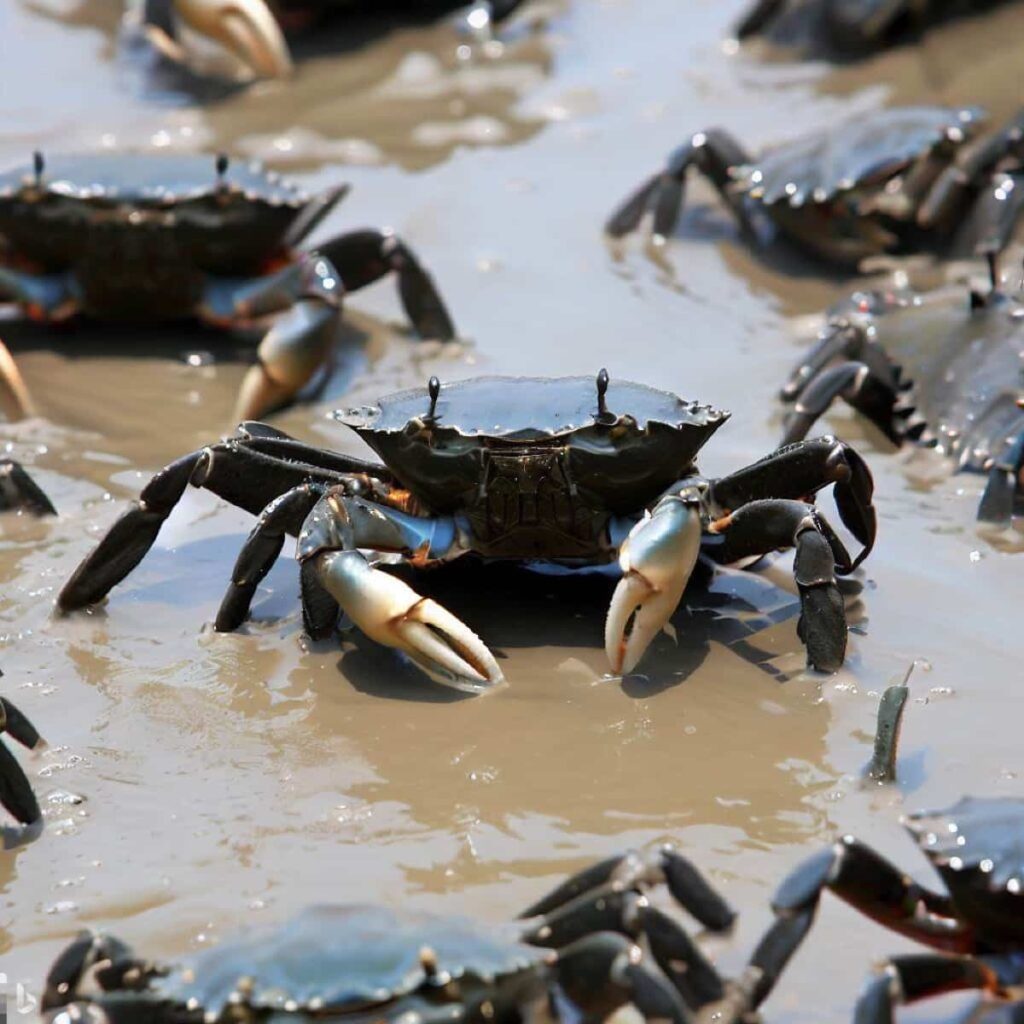
Moreover, with the right techniques, it is relatively easy to cultivate these crabs, ensuring a steady harvest. This creates a win-win situation for consumers and producers, promising long-term profitability. In this blog, we’ll delve into the science and economics of mud crab farming to guide you in this evergreen venture.
What is Mud Crab Farming?
Mud crab farming is raising mud crabs in controlled environments for commercial purposes. These crabs are a sought-after delicacy known for their rich, sweet flesh. Locally called “alimango,” mud crabs thrive in the muddy waters along the coastlines of the Philippines. Farming them involves preparing ponds or enclosures where the crabs can grow until they reach a marketable size. With proper care, these crabs can be harvested within a few months, providing a consistent and profitable income. This aquaculture is beneficial for the ecosystem and a boon for local farmers.
Benefits of Mud Crab Farming
- High Profitability: The high demand for mud crab meat in local and international markets ensures good profitability for farmers.
- Steady Income: Once established, mud crab farming offers a consistent income, providing financial stability for coastal communities.
- Low Startup Costs: The initial investment is relatively low, typically requiring basic traps and bait, making it accessible for small-scale farmers.
- Job Creation: The growing industry provides employment opportunities in farming and the supply chain, including transportation and retail.
- Market Expansion: The increasing awareness and popularity of mud crab dishes are expanding the market, promising higher returns in the long run.
- Sustainable Practices: Mud crab farming can replace destructive fishing methods, thus promoting sustainable aquaculture.
- Mangrove Preservation: Farming mud crabs protect mangrove forests, which are their natural habitats and crucial for ecological balance.
- Resource Management: Controlled farming can reduce pressure on wild crab populations, aiding in resource management.
- Ecosystem Support: Mud crab farming can form part of an integrated multi-trophic aquaculture system, recycling nutrients and supporting other marine life.
- Community Involvement: The practice can foster community-based conservation efforts, enhancing local awareness and involvement in environmental protection.
In case you missed it: Mudfish Farming in the Philippines: How to Raise and Grow Dalag
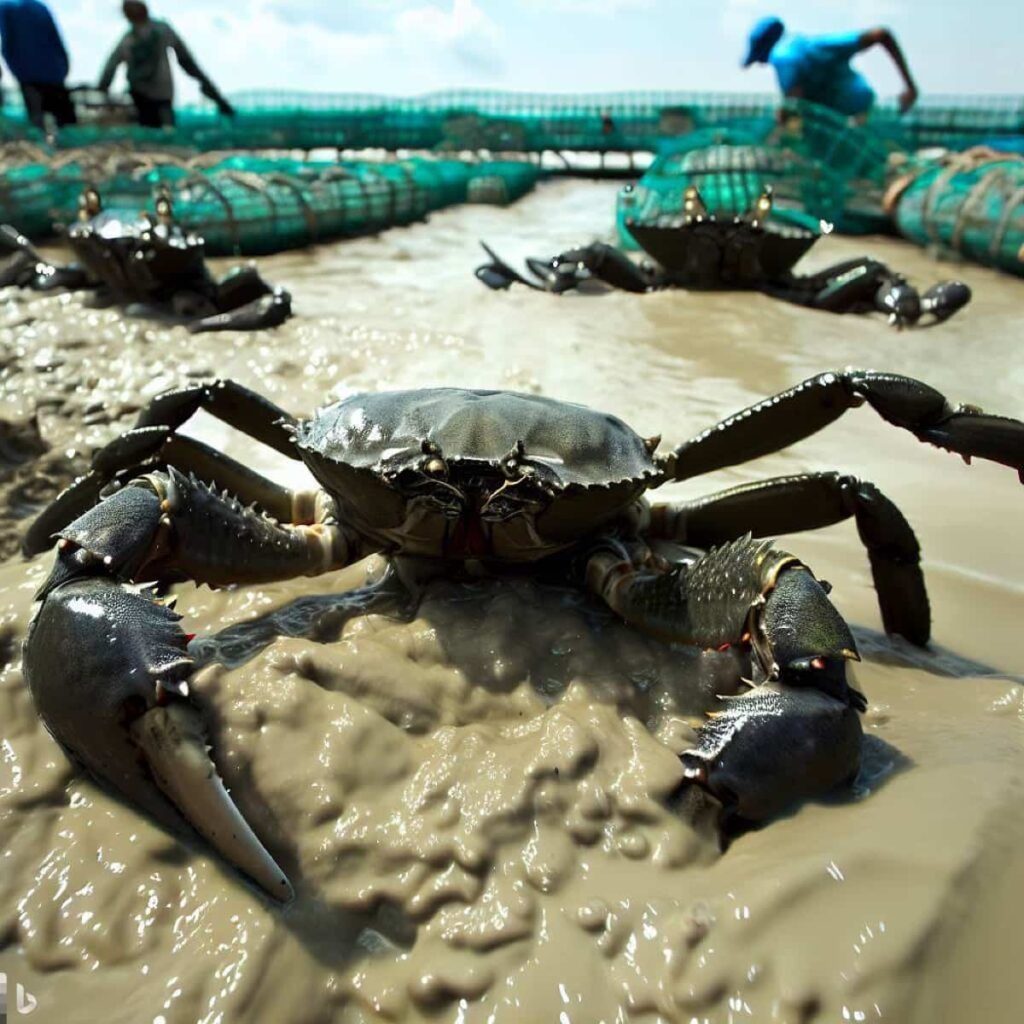
Mud Crab Farming Techniques in the Philippines
- Pond Culture: This is the most common technique, where a pond is dug out, often near a mangrove area. The pond is then stocked with juvenile crabs. This method benefits from the natural ecosystem, ensuring healthy crabs.
- Pen Culture: A netted enclosure is set up in shallow coastal waters. This allows crabs to grow in a more natural environment but with less exposure to predators.
- Floating Cages: This involves setting up floating net cages in deeper waters. This is ideal for locations with significant tidal variations.
- Indoor Systems: Though less common, controlled indoor environments with tanks can manipulate conditions like temperature and water quality for faster growth.
- Feeding: Crabs are usually fed a diet of fish waste, mollusks, and other organic matter. Some farmers opt for commercial feeds to improve growth rates.
- Harvesting: Crabs are usually harvested manually using traps or draining the pond. The crabs are then sorted by size and weight before sale.
Best Practices for Mud Crab Farming in the Philippines
- Site Selection: Choose a location near brackish water with enough space for crab pens. The site should have a good supply of mud and sand to mimic the crabs’ natural habitat.
- Site Preparation: Clear the land of debris and level it. Fill it with mud and sand, and ensure proper drainage. Dig a water pit adjacent to the pens for a water source.
- Seeding and Stocking: Acquire an appropriate number of juvenile crabs; 10-15 are recommended for small-scale farms. Place them in tanks or ponds filled with brackish water.
- Monitoring and Feeding: Regularly check the crabs’ environment and growth. Feed them a balanced diet of algae, fish, and worms.
Mud Crab Farming Systems in the Philippines
The most common is “Pond Culture,” where ponds are dug near mangrove areas and stocked with juvenile crabs. “Pen Culture” involves netted enclosures in shallow coastal waters, offering protection from predators while allowing a natural growth environment. “Floating Cages” are used in deeper waters, especially in places with significant tidal changes. Less commonly, “Indoor Systems” offer controlled environments using tanks, allowing for precise management of growth conditions. These methods contribute to the Philippines’ growing and profitable mud crab industry.
Mud Crab Hatchery Management in the Philippines
Mud crab hatchery management is a specialized area within mud crab farming, focused on the crab’s breeding and early life stages. In the Philippines, hatcheries provide a steady supply of juvenile crabs, locally known as “crablets,” for farming. The process starts with selecting high-quality broodstock, mature crabs used for breeding.
In case you missed it: Seaweed Farming in the Philippines: Best Practices and Techniques
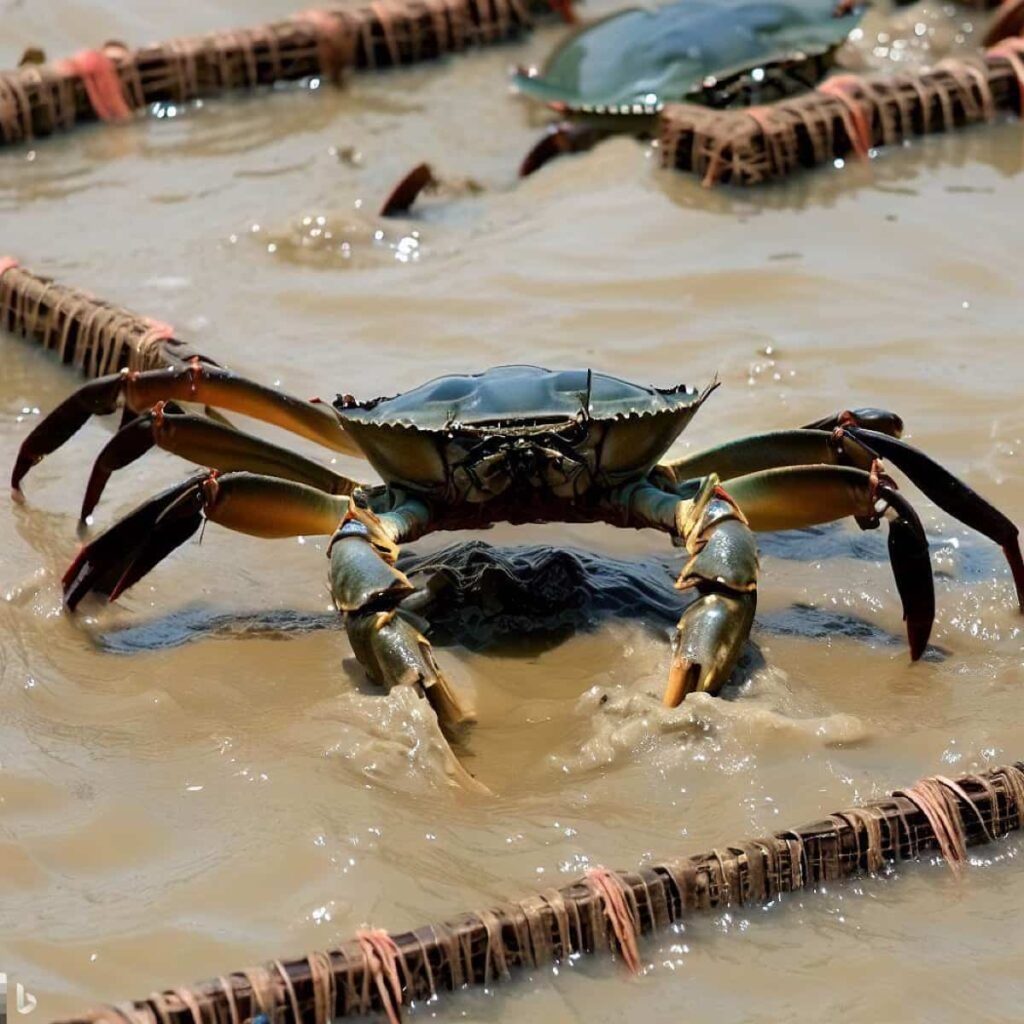
These crabs are placed in controlled conditions where they spawn, and their eggs are collected and incubated. Special care is given to water quality, salinity, and temperature to ensure optimal conditions for larval development. Once the larvae hatch, they are nurtured in tanks and fed a diet of plankton until they mature into crablets. These juvenile crabs are then ready for stocking in larger farming systems like ponds or pens.
Feeding Strategies for Mud Crab Farming in the Philippines
Feeding Mud crab diet in the wild consists mainly of marine detritus, mollusks, crustaceans, and fish, the importance of which to their diet varies with location. In Pohnpei, Micronesia (Federated States of), the mangrove clam, Geolina Papua, was found in 39 percent of S. serrata guts examined. Mud crabs can catch fish and shrimp, seizing them with chelae.
The potential importance of plant-based nutrient sources to mud crabs has been recognized by work that found their high apparent digestibility coefficient for cellulose, soybean, and rice bran in formulated diets, together with their ability to readily consume starches, indicating that the marine detritus component of their diets in the wild may be more important than had been previously considered.
Although one of the earliest descriptions of mud crab life history described them feeding on algae, decaying wood, and bamboo sticks, mud crabs can best be described as omnivores, which scavenge throughout their local range for various food sources. However, their cannibalistic tendencies are also well documented. There is little difference in their natural food preferences from juvenile through subadult to adult.
Disease Management in Mud Crab Farming in the Philippines
Pest and disease management are crucial for successful mud crab farming. Common pests such as other crabs, snails, and worms pose risks and require regular monitoring. If pests are detected, immediate removal and replacement of affected crabs are necessary. Algal blooms, which can lead to oxygen deprivation, should be prevented using approved algicides. As for diseases, prevention hinges on maintaining water quality and avoiding overcrowding. Implementing strict sanitation measures and frequent water changes are essential to keep the crabs healthy.
Market Opportunities for Mud Crab Farming in the Philippines
The market for mud crab farming in the Philippines is ripe with opportunities owing to domestic and international demand. Locally, mud crabs are a delicacy and a staple in Filipino cuisine, creating a steady market. Internationally, countries like China, Singapore, and Hong Kong offer lucrative export options, as mud crab is a high-value seafood product in these regions.
Economic data suggest that mud crab farming can be a profitable venture. The startup and maintenance costs are relatively low, especially given the abundant natural resources like mangroves and brackish water available in the Philippines. Additionally, the growing awareness of sustainable farming practices makes this a preferred option over wild-caught crabs, adding an environmental selling point that can attract higher prices.
There’s also room for innovation and value addition. Packaging, branding, and certifying the mud crabs as organic or sustainably farmed can tap into premium markets. In terms of grants and technical training, government support further sweetens the pot for potential farmers.
Profitability of Mud Crab Farming in the Philippines
Mud crab farming in the Philippines can be a highly profitable business. Starting a small-scale mud crab farm may require an initial investment ranging from $1,000 to $5,000, depending on the size and location. This covers the cost of land preparation, crab pens, water supply systems, and initial stock of crabs. Operating costs mostly include feed, which can vary but is usually around $500 per month for a small farm, and labor costs, which can also be around $300 per month.
In case you missed it: Eel Farming in the Philippines: A Profitable Eel Fish Business for Aqua Farmers
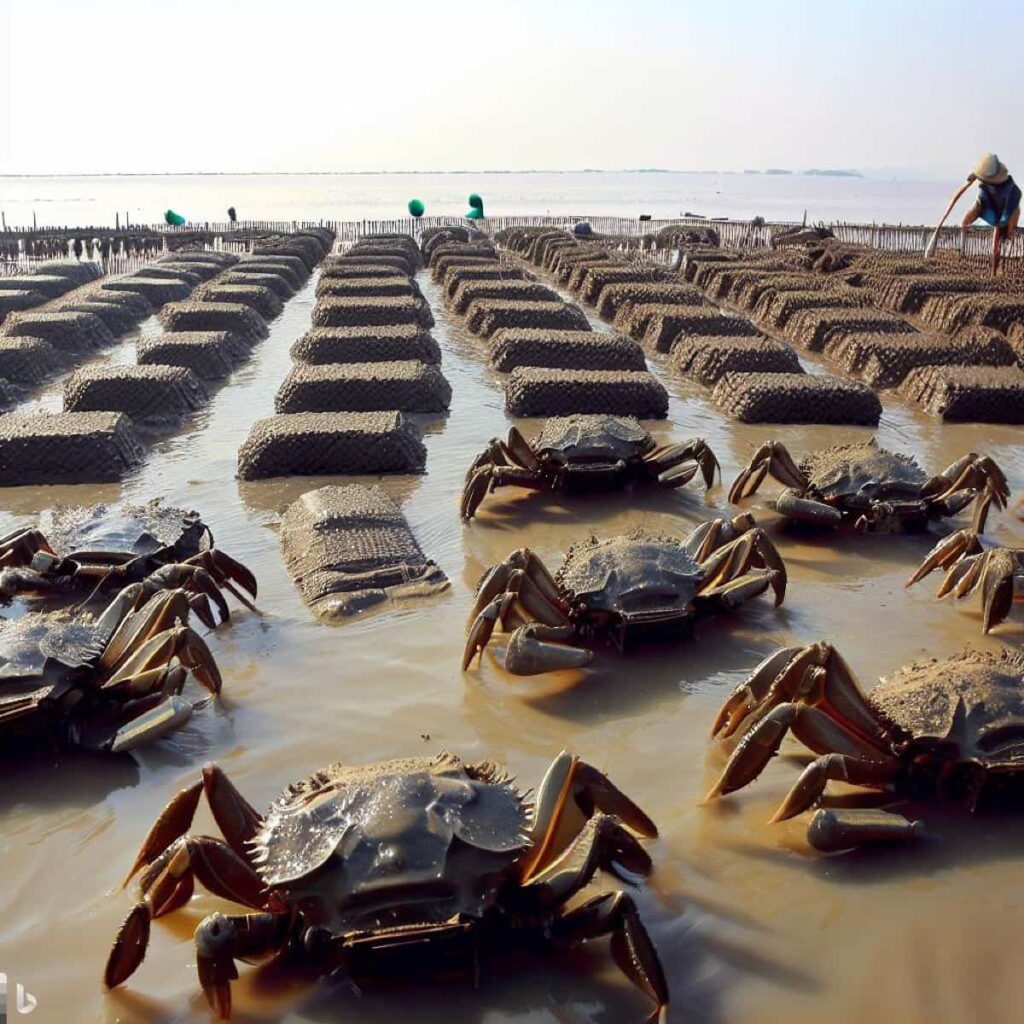
Routine maintenance and possible treatment for pests and diseases should also be budgeted. Now, let’s talk about profits. A single mud crab can sell for around $6-$8 in the local market and even more when exported. A small farm can yield hundreds of crabs per harvest, translating to thousands of dollars in revenue. Given the high local and international demand, especially in countries like China and Singapore, mud crab farming can offer a quick return on investment.
Mud Crab Seed Production in the Philippines
- Incubation System: Each female crab is transferred to an individual incubation tank after spawning to prevent infections. These tanks range from 100-500 liters and are optimized for water quality and hygiene.
- Water Treatment: Water is treated rigorously to control bacteria and fungi. Some cases require antimicrobial treatments like formalin baths.
- Larval Rearing: Hatcheries are designed with lighting conditions that maximize larval feeding and survival. Areas are well-ventilated and designed for biosecurity.
- Tank Design: Various shapes and sizes of tanks are used. Larval survival is highest in black tanks, requiring specific attention to tank color.
- Temperature Control: Thermal insulation materials and digital thermostats maintain a narrow temperature range.
- Waste Management: Systems are in place for organic waste removal and water filtration, ensuring optimal conditions.
- Monitoring: Regular inspections are conducted for disease and larval development.
- Modular Design: A modular approach is used to improve operational efficiency and risk management for large hatcheries.
- Water Supply: A dual supply of filtered fresh and saltwater is mandatory, and supply systems should allow regular cleaning.
- Aeration: Effective aeration devices are installed to keep larvae suspended in the water column, preventing contact with debris.
In case you missed it: Koi Fish Farming in the Philippines: A Profitable Business
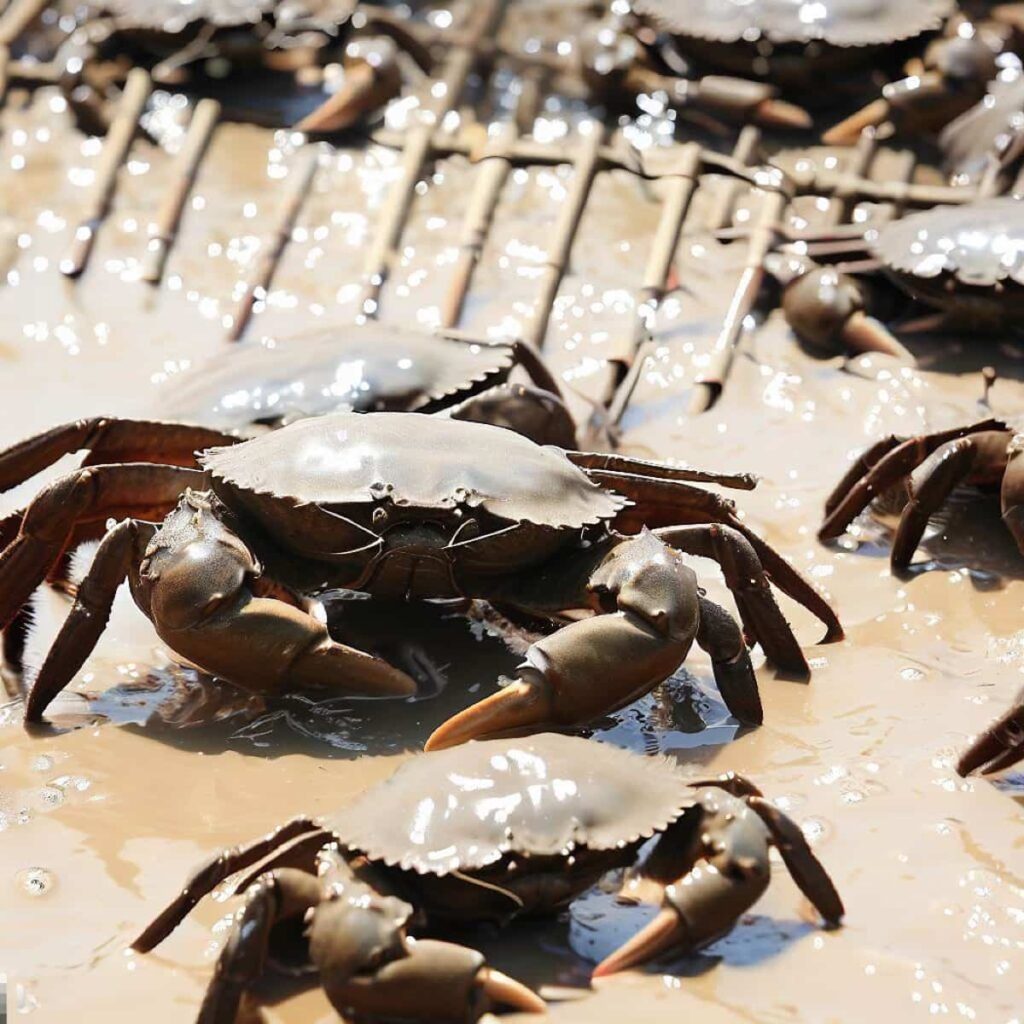
Water Quality Management in Mud Crab Farming in the Philippines
- Biosecurity: Mud crab hatcheries should have high biosecurity measures to protect against pathogens and poor hygiene. The cost of biosecurity should be balanced against the benefits it offers. High hygiene levels are essential for larval survival.
- Facility Design: Functional areas like broodstock holding, hatching tanks, larval rearing, and live food production should be separate to minimize cross-contamination. Regular cleaning and shutdown periods are advised.
- Water Treatment: Different treatments like UV sterilization and chemical treatment can minimize water-borne pathogens. High water hygiene is essential for larval culture and live feed production.
- Broodstock Management: Tanks for broodstock should have temperature control. Low light conditions minimize stress and improve reproductive performance. Broodstock are prone to escape, so appropriate fencing is essential.
- Spawning Conditions: Female mud crabs require sandy bottoms for successful spawning. Inadequate conditions will result in better spawnings and higher hatching rates.
- Hygiene and Water Quality: Uneaten feed and waste should be regularly removed to maintain water quality. Recirculating systems with filtration can be used if water use is restricted.
- Incubation: After spawning, females should be moved to separate incubation tanks to protect the egg mass from infections. High hygiene levels are essential for the incubation phase.
Mud Crab Broodstock Selection and Management in the Philippines
In aquaculture, mud crabs mature in 6–7 months, whereas it takes 18–24 months in the wild. They can be farmed successfully with water quality, pond management, and nutrition expertise. Grow-out systems are usually pond-based, varying in size from 0.5-2 hectares. Due to strong demand and good export potential, mud crab farming is highly profitable, particularly in countries like the Philippines, Indonesia, and India.
Reproduction happens year-round, with peaks in March-April and August-September. Juvenile crabs are most abundant from May to June. While they tolerate varying salinities and can survive briefly in freshwater, they prefer a 15-25 ppt salinity. Mud crabs consume shellfish and mollusks, including cockles, clams, and mussels. Though they can tolerate different water conditions, they prefer sheltered estuaries and mangrove areas. These crabs often reside in burrows during low tide.
In case you missed it: Profitable Carp Farming in the Philippines: A Step-by-Step Guide for Carp Fish Culture
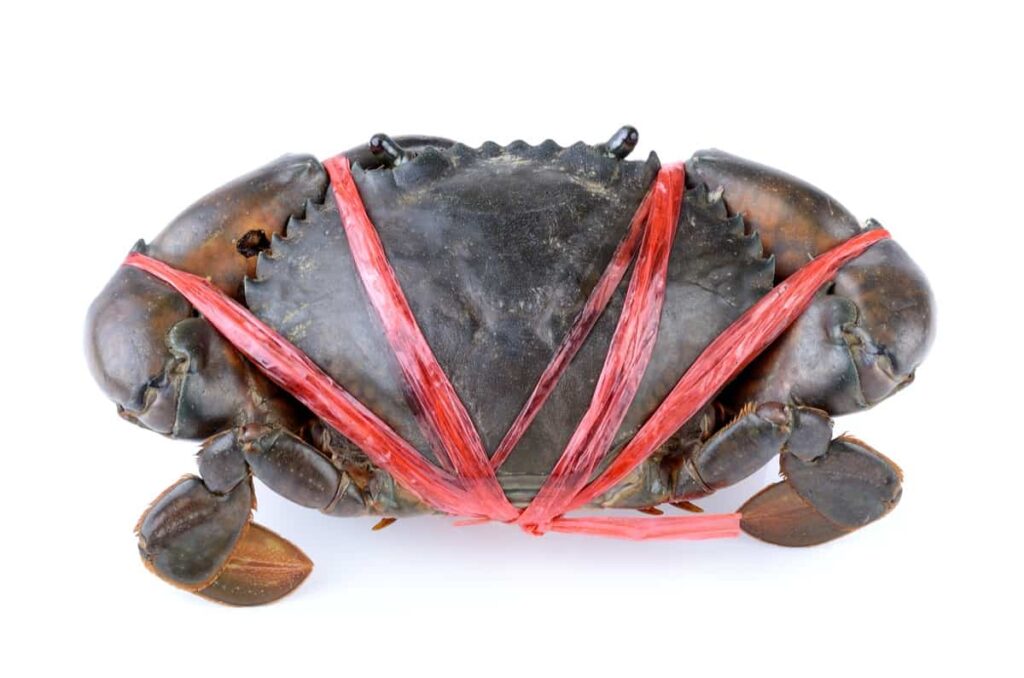
Conclusion
Mud crab farming in the Philippines is an evergreen, lucrative venture due to high local and export demand. With a fast growth rate and a strong market for the product, it offers sustained profitability when managed with expertise in aquaculture practices.
- Profitable Village Farming Business Ideas in 2024
- High-Yield Aquaculture: Fast-Growing Fish for Farming
- Effective Fish Pond Construction Techniques for Beginners
- Irrigation and Water Management in Pineapple Farming
- Blossom to Harvest: Mastering Flowering and Pollination in Papaya Farming
- Pig Fattening Essentials: From Selection to Sale for Beginners
- Raising Wagyu Cattle: A Complete Guide for Premium Beef Production
- Soil Types and Their Water Holding Capacity
- Optimizing Irrigation Schedules for Coconut Groves for Enhanced Yield
- Espresso Your Garden: Coffee Grounds for Healthier Acid-Loving Plants
- The Best Soil Mix for Snake Plants: How to Mix Your Own Snake Plant Soil
- Green Thumb Success: Expert Tips for Cultivating Greenhouse Beans All Year Round
- Bloom All Year Round: The Ultimate Guide to Indoor Hyacinth Care
- Eco-Friendly Gardening: How to Make Liquid Fertilizer from Kitchen Waste
- Ultimate Guide to Grow Anise in Pots: Explore Seed Propagation to Harvesting
- Guide to Raising Chester White Pigs: Discover Breed Facts to Growth Management
- Mastering the Elegance: The Ultimate Guide to Weeping Cherry Tree Care, Planting, and Maintenance
- Ultimate Guide to Planting Garlic in Grow Bags: Growing Strategies for Beginners
- How to Fix Spider Plant Leaf-Related Problems: Natural and Organic Remedies
- 10 Reasons Why Your Tulsi Plant is Shedding Leaves: Home Remedies and Solutions
- Optimizing Growth and Yield: The Advantages of Palm Bunch Ash Fertilizer
- Utilizing Neem Oil Extract as a Natural Pesticide for Hydrangea
- From Soil to Harvest: Various Ways in Which Farmers Can Use AI Tools
- Steps to Encourage and Induce Citrus Flowers: A Comprehensive Guide
- How to Fix Snake Plant Leaf-Related Issues: Natural and Organic Remedies
- Transform Your Garden into a Fragrant Oasis with Raat Ki Rani (Night Blooming Jasmine)
- Discover the Ideal Chicken Breeds for Philippine Farms
- How to Create a Poultry Egg Farm Business Plan for Profits
- Grow Lemon Cucumbers Like a Pro: Insider Techniques for Bountiful Yields
- Ultimate Guide to Caring for Your Pink Princess Philodendron: Tips for Thriving Variegation
- Areca Nut Profit Per Acre: Calculating Yield and Cost of Cultivation
- How Kaveri Chicken is Becoming a More Profitable Breed in Indian Backyards
- Transform Your Barn: 9 Steps to Convert a Horse Stall into a Chicken Coop
- Exploring Suffolk Sheep Disadvantages with Limitations and Challenges
- Guide to Solving Potted Lemon Tree Problems: How to Revive Lemon Tree in Containers
- Steps to Encourage Female Pumpkin Flowers: Best Strategies for More Flowers and High Yields
